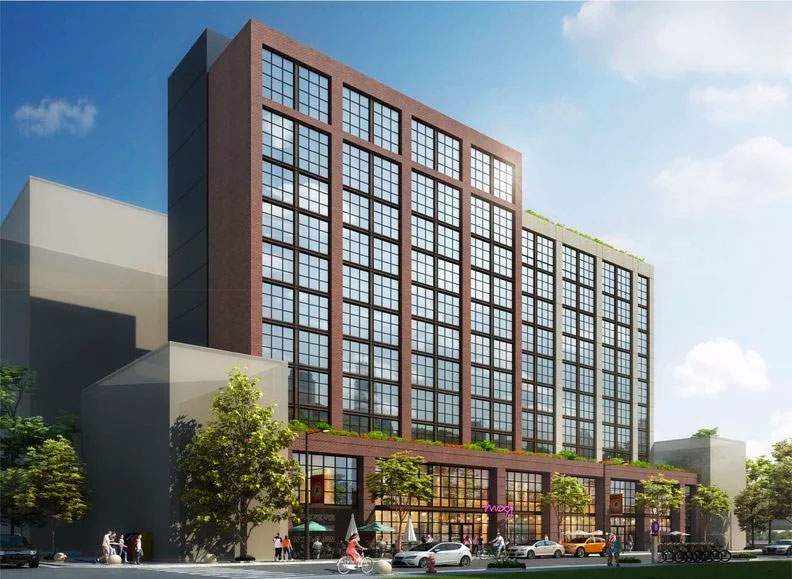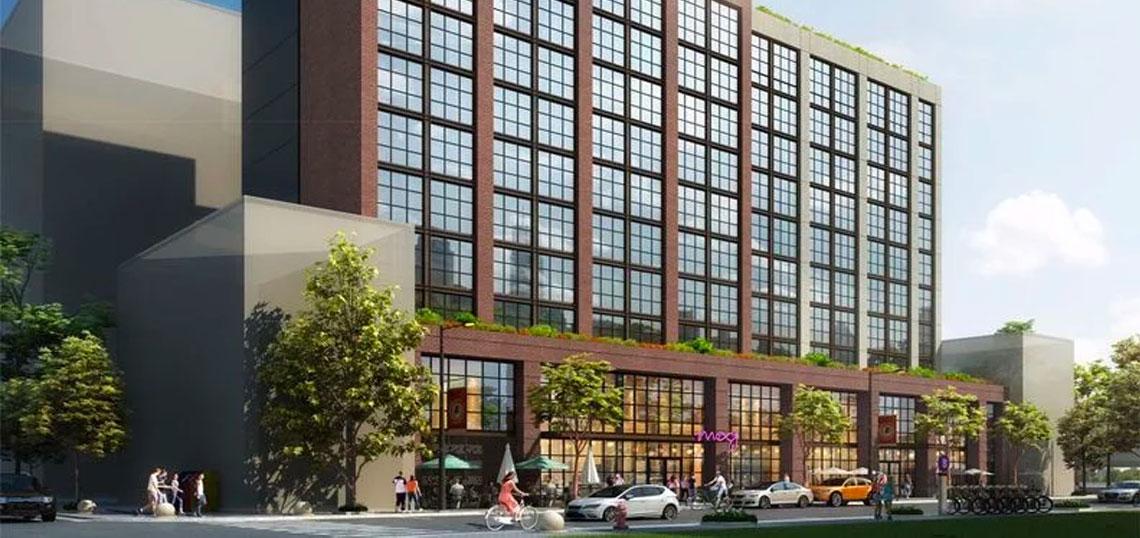As the hotel industry continues to reel from the effects of Covid, the idea of opening new accommodations anywhere in the city seems wholly out of step. But Lightstone Group and Marriott are banking on a strong 2022 recovery, even amid news that more than 200 hotels have shuttered since the pandemic onset—including those of Marriott itself.
But Lightstone is optimistic and they are working with Marriott to introduce two new hotels to Brooklyn and Manhattan, not with a luxury bend, but under its budget-friendly marque Moxy, "a spirited alternative to the typical hotel experience."
 The Williamsburg Moxy | Lightstone Group
The Williamsburg Moxy | Lightstone Group
The hotels will rise at 353 Bedford Avenue at South 4th, just a block from the Williamsburg Bridge; and 145 Bowery, next to the Tenement Museum on the Lower East Side; both very well-positioned in their young and fashionable neighborhoods.
The 303-key LES outlet will be 127,000 square feet and include a restaurant, a lobby bar, a cocktail bar, and a lounge, while the 203-key Williamsburg development will add 88,000 square feet to the neighborhood along with a café, a lobby bar, a cocktail lounge, an outdoor garden, and a rooftop bar. Rooms in both hotels will average around 200 square feet.
“We’ve seen in our NYC hotels that younger, more adventurous people are taking advantage of the attractive prices right now and using this as an opportunity to see the city,” Mitchell Hochberg, Lightstone’s president, told Crain's. “Creating safe and comfortable ways to socialize while providing an affordable rate will always be appealing to our guests.”
Hochberg believes the 2022 openings will coincide nicely with a strong rebound and what will likely be a short supply of rooms resulting from all the hotel closures in the past 12 months.
Three other Moxy locations are already in operation in Times Square, Chelsea, and the East Village, where prices range from $100-200 night depending on the location. According to Crain's, all have remained opened through pandemic thanks to government contracts, though vacancy has regularly exceeded 50 percent.
- Williamsburg (Urbanize NYC)
- Lower East Side (Urbanize NYC)







